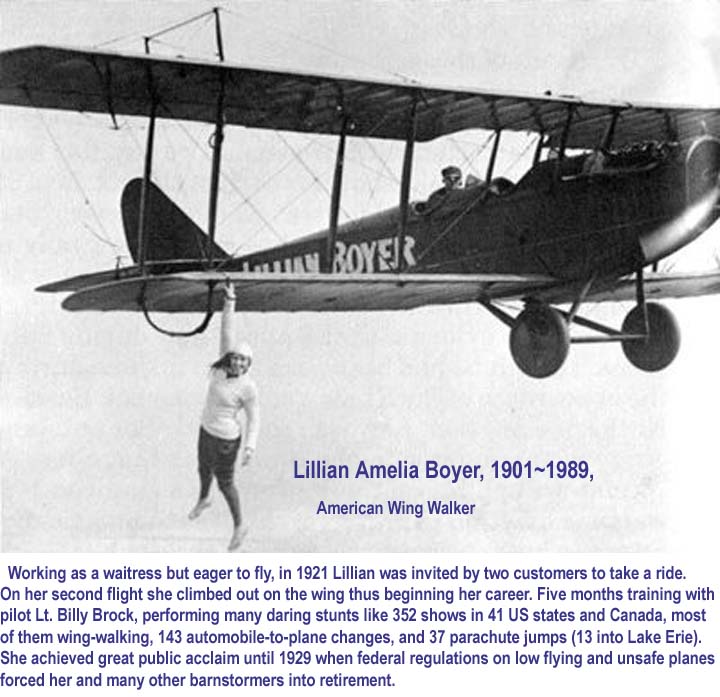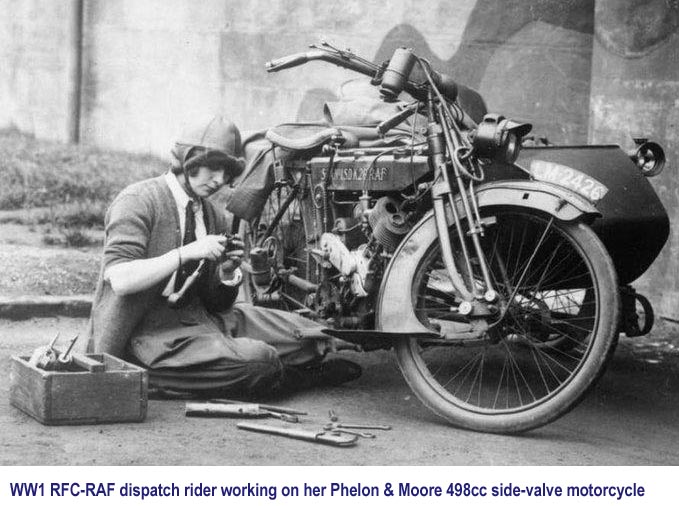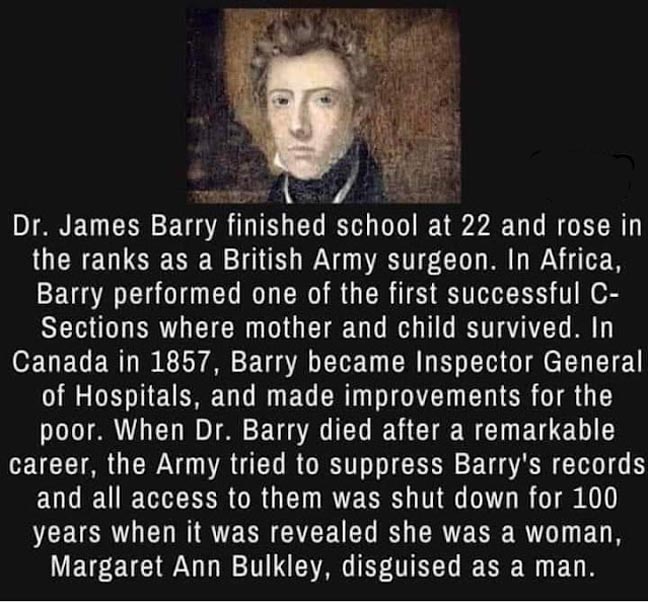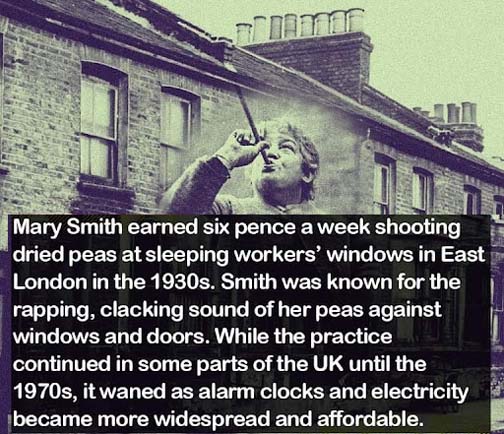
The Cellar: a friendly neighborhood coffee shop, with no coffee and no shop. Established 1990.
- griff
- A Magical Woodland Creature
 Offline
Offline - Registered: 10/13/2020
- Posts: 3,134
Re: Notable Women
Tip of the hat.
If you would only recognize that life is hard, things would be so much easier for you. - Louis Brandeis
- TheNeverWas
- Member
 Offline
Offline - Registered: 6/30/2021
- Posts: 1,379
Re: Notable Women
At least she knew her place.
I'm kidding, I'm kidding. Now put down that hatchet.
These statements have not been evaluated by the FDA, EPA, FBI, DEA, CDC, or FDIC. These statements are not intended to diagnose, cause, treat, cure, or prevent any disease. If you feel you have been harmed/offended by, or, disagree with any of the above statements or images, please feel free to fuck right off.
- monster
- Chaos is my protegé
 Offline
Offline - From: RIGHT BEHIND YOU......
- Registered: 10/13/2020
- Posts: 3,028
Re: Notable Women
The most difficult thing is the decision to act, the rest is merely tenacity Amelia Earhart
- xoxoxoBruce
- The Future is Unwritten
 Offline
Offline - Registered: 10/15/2020
- Posts: 4,355
Re: Notable Women

John Fubbister (Isobel Gunn posing as male) left Scotland to work at The Hudson Bay Company in Canada on a three year contract in 1806. She worked with the men at Albany taking out supplies and bringing back furs from the trappers. Autumn of 1807 assigned to a brigade supplying distant outposts, the furthest being 1800 miles west. December 29th 1807 at the home of Alexander Henry the younger, the chief of the North West Company's Pembina post, according to Henry's journal:
I returned to my room, where I had not been long before he sent one of my own people, requesting the favour of speaking with me. Accordingly, I stepped down to him, and was much surprised to find him extended out upon the hearth, uttering most dreadful lamentations; he stretched out his hand towards me and in a piteful tone of voice begg'd my assistance, and requested I would take pity upon a poor helpless abandoned wretch, who was not of the sex I had every reason to suppose. But was an unfortunate Orkney girl pregnant and actually in childbirth, in saying this she opened her jacket and display'd to my view a pair of beautiful round white breasts.
HBC freaked, women weren’t allowed to work for them in Canada except the native women hired for domestic chores. So she was shipped back to Albany, given a job as a washerwoman, no longer receiving the princely sum of £8 per year. Against her wishes, she and baby were returned to Scotland in September 1809. “There, she lived in poverty, working as a stocking and mitten maker until her death”.
But she proved she could do the job and do it well.
Freedom is just another word for nothin' left to lose.
- •
- xoxoxoBruce
- The Future is Unwritten
 Offline
Offline - Registered: 10/15/2020
- Posts: 4,355
Re: Notable Women
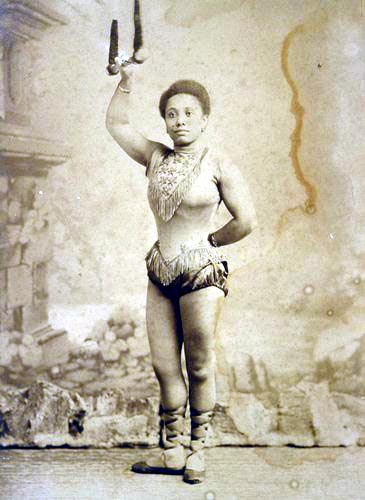
"Her real name was Olga Brown, and she was likely born in Szczecin, Poland, in 1858. Records are sketchy about her heritage, but it is believed her father was Black and her mother white, beyond this little is known of Brown’s early days. Brown’s introduction to the circus is thought to have occurred shortly after her ninth birthday. From then on, she literally learned the ropes, becoming adept at wire walking and the trapeze, as well as balancing acts and strong woman performances. She performed across Europe, including at the Folies Bergère in Paris, the Royal Aquarium in London, and the Gaiety Theatre in Manchester, at a time when circuses were considered, to borrow a phrase, the greatest show on earth. She was not the lone Black performer in these circuses—the circus had long been an inclusive place—but she was perhaps the best known."
"The Domed Roof is high above, its dark windows looking out onto the Parisian night. The audience, presumably, is seated far, far below, their necks craned upwards, their faces frozen in masks of awe. Suspended in between, the center of all attention, is a Black woman hanging from a rope by her teeth. Outfitted in white and gold, this iron-jawed woman, Miss La La, is the star of the Cirque Fernando. And this trick–which few others can perform–is her pièce de résistance."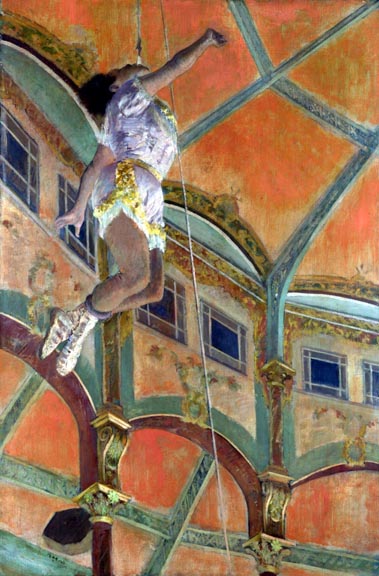
"So impressive was the feat that French impressionist Edgar Degas sought to capture the scene in his 1879 painting “Miss La La at the Cirque Fernando.” Art critic Roy McMullen reportedly hailed the oil painting, on display at the Fourth Impressionist Exhibition in Paris, as “Among the artist’s most striking and complex achievements.”
But that was then and this is now...
For Marilyn R. Brown, professor of art and art history at the University of Colorado, Degas’ painting is all about race and the white male gaze. “In the representation of ‘race’ in Edgar Degas’s Miss La La at the Cirque Fernando, the precarious positioning of the acrobat’s teeth gives extraordinary embodiment to a historical moment of white masculine anxiety,” the professor writes in the essay “‘Miss La La’s’ Teeth: Reflections on Degas and ‘Race’” published in The Art Bulletin. What?
"A specialist in nineteenth-century French art with a B.A. from Birmingham-Southern College and an M.A., M.Phil, and Ph.D. from Yale University. Her article "'Miss La La's' Teeth: Reflections on Degas and 'Race'," The Art Bulletin (December 2007) received two awards."
Ms Brown with her squashed in head, lesbian hair style, hippie glasses and a string of murdered oysters around her chicken neck.
A ridiculous unfair description? Yes it is, like the one she hung on Degas for painting something thousands of people saw and many more wished they had seen. Ms Brown has made a comfortable living telling the world what artists long before her time were thinking and their subconscious motivations. In other words, bullshit. She infects every student in her sphere with her made up crap about long dead artists and gets away with it because nobody can refute it. Unfortunately her damage will go on when she's rotting in hell.
Freedom is just another word for nothin' left to lose.
- •
- tw
- Member
 Offline
Offline - Registered: 10/16/2020
- Posts: 1,684
Re: Notable Women
A trick. Pioneered by the guy who later trained Penn and Teller.
All done to music later modified with better lyrics by The Lovin Spoonful.
Do you believe in magic in a young girls mouth ...
While spinning about, she can not really shout ...
Its magic if a dummy is fooling
the many who think they know it while drooling.
Last edited by tw (3/22/2022 10:23 pm)
- xoxoxoBruce
- The Future is Unwritten
 Offline
Offline - Registered: 10/15/2020
- Posts: 4,355
Re: Notable Women
Blackjack—née Ada Deletuk—was born in 1898 in Spruce Creek, Alaska, a remote settlement north of the Arctic circle near the gold rush town of Nome.
While Blackjack was Inupiat, she was not raised with any knowledge of hunting or wilderness survival.
She was instead brought up by Methodist missionaries who taught her enough English to study the bible, and who instructed her in housekeeping, sewing, and cooking white-people food.
When she joined the 1921 expedition as a seamstress, she was assured that she wouldn’t have to contend with the brutal Arctic conditions and would be well fed and cared for.
But as the food supply dwindled, she was left to care for an ill crew member as the three others went off to seek help.
They never returned, and Blackjack quickly learned the hard art of survival.
The guy died, so she moved out and built herself a shelter. She learned to shoot the rifle and fish.
When she was rescued two years later she was healthy and wearing warm furs she had harvested.
Freedom is just another word for nothin' left to lose.
- •
- xoxoxoBruce
- The Future is Unwritten
 Offline
Offline - Registered: 10/15/2020
- Posts: 4,355
Re: Notable Women
In 1747, 22-year-old Hannah Snell went in search of her husband—or at least that’s what she would later claim.
Following the death of her daughter, Snell disguised herself as a man and joined the British navy as James Gray.
With her regiment, she sailed around the tip of Africa and participated in battles against the French in Mauritius and southern India.
Her true sex was never uncovered, even after getting wounded in the groin. (makes me wonder if the medic was rewarded for silence)
When she returned to England and revealed her identity to her shipmates, she was suddenly launched into stardom.
Across England, she performed in her own stage show recounting tales and executing military drills and songs.
She even became the subject of a bestselling 18th-century biography.
I suspect she was envious of hubby, and decided she would break the social shackles and do it too.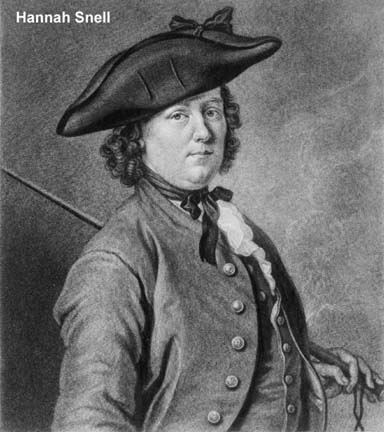
Freedom is just another word for nothin' left to lose.
- •
- xoxoxoBruce
- The Future is Unwritten
 Offline
Offline - Registered: 10/15/2020
- Posts: 4,355
Re: Notable Women

Betty Reid Soskin’s Cajun-Creole, African American family settled in Oakland, CA after the “Great Flood” that devastated New Orleans in 1927.
During WW II she was a file clerk at the Boilermaker’s Union hall.
1945 she and husband Mel Reid, founded Reid’s Records, pioneer black-owned music store, that closed in 2019.
She’s been staff to a Berkeley city council member, field rep in West Contra Costa County for 2 CA Assembly Guys.
She got involved in planning the Rosie the Riveter/World War II Home Front National Historic Park in Richmond, CA.
In 2003 a consultant and 2007 a ranger at 84, and 2011 a full-time park employee..
Until her retirement on March 31, 2022, at age 100, she was the oldest National Park Ranger.
~1995 Betty was named “Woman of the Year” by the California State Legislature.
~ 2005 named 1 of 10 of the nation’s outstanding women “Builders of communities and dreams”
by the National Women’s History Project at ceremonies in both L.A. and D.C.
~2016 Silver Medallion Award at the World War II Museum in New Orleans. There are only two
women among 30 past recipients, the other is Elizabeth Dole.
~2016 Sierra Club’s prestigious Trailblazer Award, for a lifetime of service and barrier-breaking.
~2016 invited to opening ceremony of the Smithsonian National Museum of African-American History
and Culture, as Interior Secretary Jewell’s guest.
~2018 an honoree at the Makers Conference in Hollywood where feminists from across the nation
gather annually to recognize “Makers.”
~2018 published her book, “Sign My Name to Freedom”, based on the blog she had been writing for
the previous 10 years. The book recounts her experiences from childhood to the present.
~2019 a film produced by the Rosie the Riveter Trust, “No Time To Waste: The Urgent Mission of
Betty Reid Soskin” was released. A documentary of Betty’s involvement with Rosie the Riveter/WWII Home Front
National Historic Park and her influence on the NPS telling untold stories, and in sharing her history in ways that
inspire and challenge current social norms.
Betty has been featured in countless video and print interviews most notably the Today Show, NPR, the Tavis Smiley Show, NBC Bay Area, the Commonwealth Club, and Newsweek. She has also been the subject of a number of podcasts and independent short films.
Freedom is just another word for nothin' left to lose.
- •
- xoxoxoBruce
- The Future is Unwritten
 Offline
Offline - Registered: 10/15/2020
- Posts: 4,355
Re: Notable Women
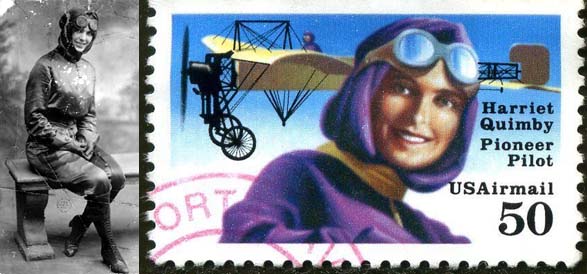
Harriet was born a farmer’s daughter in 1875, and later relocated to San Francisco. Her striking beauty landed her modeling gigs and a small role in a film, but her true calling was as a writer. In the early 1900s, Harriet moved to New York to be a theatre critic and photo journalist.
She was one of the first journalists to use a typewriter. Harriet had an apartment and a yellow car.
In 1910 she met Matilde Moisant who’s family owned an aviation school in Long Island. She thought flight lessons would make for an interesting article. Four months and thirty-three lessons later, in 1911 became the first woman with a US pilots license. She ditched petticoats for a purple satin aviation suit paired with antique jewelry and high laced boots. Nicknamed the ‘China Doll’ by the press, she capitalized on her popularity and was often sought out for lucrative high profile spectator events.
Harriet’s newspaper column encouraged women to take up this ‘fruitful occupation’. Flying is a fine, dignified sport for women, healthy and stimulating for the mind, and there is no reason to be afraid so long as one is careful.’ She also advocated for women to learn to drive and fix cars.
Harriet competed day and night in airplane races around the country, showcasing her talent and earning thousands of dollars at a time for each performance. At President Madero’s inauguration in Mexico City, she got the idea to fly across the English Channel, a legitimate feat of aviation at that time. No radar or GPS, communication was crude at best, no navigational aids. Over an open ocean was wildly dangerous. Despite this huge achievement, it was the day after the Titanic sank.
She penned seven screenplays made into silent film shorts, graced many a glossy magazine cover, and became the face of a new grape soda, Vin Fizz. On July 1st 1912, at the Annual Boston Aviation Meet, at 1000 feet the aircraft pitched forward, ejecting Harriet her death, aged 37. In a sealed secret note to her parents, she had written, ‘if the worst happened, I will have met my fate rejoicing’.
A genuine celebrity.
Freedom is just another word for nothin' left to lose.
- •
- xoxoxoBruce
- The Future is Unwritten
 Offline
Offline - Registered: 10/15/2020
- Posts: 4,355
Re: Notable Women
Freedom is just another word for nothin' left to lose.
- •
- Diaphone Jim
- Not Ignoring You.
 Offline
Offline - Registered: 10/13/2020
- Posts: 1,415
Re: Notable Women
I wonder if one of Lillian's landings was the source of the term "hit the ground running?"
And, does she have some kind of safety strap on he wrist or just strong hands?
- xoxoxoBruce
- The Future is Unwritten
 Offline
Offline - Registered: 10/15/2020
- Posts: 4,355
Re: Notable Women
Looks to me like a strap on her wrist going up to the top of the bottom wing.
Of course you wouldn't see that from the ground.
It's fortunate those planes flew slow, otherwise she'd be flapping like a flag.
Freedom is just another word for nothin' left to lose.
- •
- TheNeverWas
- Member
 Offline
Offline - Registered: 6/30/2021
- Posts: 1,379
Re: Notable Women
Maybe that's where the term 'flappers' really came from?
These statements have not been evaluated by the FDA, EPA, FBI, DEA, CDC, or FDIC. These statements are not intended to diagnose, cause, treat, cure, or prevent any disease. If you feel you have been harmed/offended by, or, disagree with any of the above statements or images, please feel free to fuck right off.
- xoxoxoBruce
- The Future is Unwritten
 Offline
Offline - Registered: 10/15/2020
- Posts: 4,355
Re: Notable Women
You're thinking of the nude skydivers.
Freedom is just another word for nothin' left to lose.
- •
- TheNeverWas
- Member
 Offline
Offline - Registered: 6/30/2021
- Posts: 1,379
Re: Notable Women
Hah!
These statements have not been evaluated by the FDA, EPA, FBI, DEA, CDC, or FDIC. These statements are not intended to diagnose, cause, treat, cure, or prevent any disease. If you feel you have been harmed/offended by, or, disagree with any of the above statements or images, please feel free to fuck right off.
- xoxoxoBruce
- The Future is Unwritten
 Offline
Offline - Registered: 10/15/2020
- Posts: 4,355
Re: Notable Women
Freedom is just another word for nothin' left to lose.
- •
- xoxoxoBruce
- The Future is Unwritten
 Offline
Offline - Registered: 10/15/2020
- Posts: 4,355
Re: Notable Women
Freedom is just another word for nothin' left to lose.
- •
- xoxoxoBruce
- The Future is Unwritten
 Offline
Offline - Registered: 10/15/2020
- Posts: 4,355
Re: Notable Women
A most remarkable woman Eleanor Roosevelt. Worked like crazy to get Franklin Elected then considered divorce so she could do her own thing and not be hamstrung with First Lady duties. Franklin said he wanted her to stay and she could do her own thing except he asked her to not take flying lessons while he was in office because be president provided enough to worry about. She agree but one night at a formal dinner she and Amelia Earhart ushered out everyone to the airport and flew to Baltimore and back wearing evening gowns and gloves. The secret service was not pleased.
During the big one, WWII, she showed up in the hellhole of Guadalcanal to cheer up the troops suffering war, mosquitoes, disease,and jungle heat. The secret service was not pleased.
.
Last edited by xoxoxoBruce (3/06/2023 2:57 am)
Freedom is just another word for nothin' left to lose.
- •
- tw
- Member
 Offline
Offline - Registered: 10/16/2020
- Posts: 1,684
Re: Notable Women
xoxoxoBruce wrote:
During the big one, WWII, she showed up in the hellhole of Guadalcanal to cheer up the troops suffering war, mosquitoes, disease,and jungle heat.
To put that into perspective, she was in Guandalcanal in Sept 1943. That battle had ended in Feb 1943. Action then was in the Gilbert and Marshall Islands. Still, she was where such battles were being staged. Where many Americans would die and never get home.
Probably far more memorable is what she did to create the UN.
- TheNeverWas
- Member
 Offline
Offline - Registered: 6/30/2021
- Posts: 1,379
Re: Notable Women
tw wrote:
Where many Americans would die and never get home.
It's a shame you weren't one of them.
Also, that's not a sentence, proving what I said about your difficulty creating them.
Last edited by TheNeverWas (3/06/2023 6:39 pm)
These statements have not been evaluated by the FDA, EPA, FBI, DEA, CDC, or FDIC. These statements are not intended to diagnose, cause, treat, cure, or prevent any disease. If you feel you have been harmed/offended by, or, disagree with any of the above statements or images, please feel free to fuck right off.
- xoxoxoBruce
- The Future is Unwritten
 Offline
Offline - Registered: 10/15/2020
- Posts: 4,355
Re: Notable Women
Designing Women
1878–1976
Eileen Gray was an interior designer and architect of Irish origin, though she spent most of her life in France creating modernist furniture and interiors.
1894–1958
Designer Varvara Stepanova was one of the greatest creative forces behind the Soviet avant-garde Constructivist group, who aimed to make functional and beautiful products for everyday life.
1896–1993
Söre Popitz was a German graphic designer and painter primarily known for her work at Leipzig publishing house Otto Beyer in 1930s. She studied at Bauhaus for two years and is often called the school’s best known female graphic designer.
1903–1984
Elizabeth Friedlander worked across a range of media from brochures and patterns to calligraphy and clandestine publishing, but she is most known as the first woman to design a typeface.
1912–1988
Ray and Charles Eames were two of the most influential designers of the 20th Century. The Eameses are best known for their iconic chairs, that transformed our idea of modern furniture. “Anything I can do, Ray can do better,” Charles said.
1925–1994
Muriel Cooper was an American designer, educator and researcher who charted new territory for design in the changing landscape of electronic communication. Cooper worked at the Massachusetts Institute of Technology for most of her life—first as a freelancer in the publishing office and then co-founding the prominent MIT Media Lab.
1927–1992
Graphic designer Jacqueline Casey is best known for the posters she created for the Massachusetts Institute of Technology (MIT). Strongly influenced by Swiss designers Karl Gerstner and Josef Müller-Brockmann, Casey was the foremost practitioner of the International Style in the US.
Born 1928
American artist, designer, and writer Barbara Stauffacher Solomon was the first to fuse Swiss Modernism with the West Coast aesthetic. The result is formal but fun, modern architecture reshaped by color and form.
Born 1928
Swiss graphic designer Lora Lamm is best known for her ten glorious years of work in Milan, from 1953 to 1963, when she designed packaging, posters and invitations for La Rinascente department store, Pirelli, and Olivetti.
1931–2012
Tomoko Miho was an American designer of Japanese origin, known primarily for her powerful posters inspired by Swiss international style. Tomoko’s works are currently owned by MoMA, Library of Congress, and Cooper Hewitt.
1934–2016
A skilled interior and product designer, Lella Vignelli and her husband Massimo co-founded Vignelli Associates, one of New York’s most sought-after studios.
Born 1936
Often considered the “mother of modern-day information design”, British typographer Margaret Calvert designs are on half the public signage in Britain.
Born 1937
As a child Rosmarie Tissi was fascinated with chemistry, but her personal inventions were to be made on paper.
1938–1982
Beatriz (Bea) Feitler was a Brazilian graphic designer who worked for Harper's Bazaar, Ms., Rolling Stone, and a number of other magazines.
Born 1940
Sheila de Bretteville is an American graphic designer, scholar, and activist. She advocates for women’s rights in design, setting up a number of women-only institutions.
Born 1945
Katherine McCoy is an American graphic designer and educator, primarily known as a co-founder of the graduate design program at Cranbrook Academy of Art.
Born 1948
One of the leading artists of the digital age, April Greiman was among the first to embrace computer technology as a new visual medium: her style links American Postmodernism with the rational clarity of the Swiss school.
Born 1953
Through much of her career, Los Angeles-based graphic designer Lorraine Wild has specialized in books, particularly collaborations with artists, architects, and museums.
Born 1954
Susan Kare is famous for designing Apple’s Macintosh interface elements, icons and typefaces in the 1980s, as well as a number of other pixel-based graphics for early computers.
Born 1962
Rebeca Méndez is a scholar, artist, and designer of Mexican origin, known for her works at the boundaries between academia, art, and design.
Born 1962
Gail Anderson is an American graphic designer based in New York. She worked for Rolling Stone from 1987 to 2002, achieving the position of senior art director. She also designed a number of book covers, Broadway music show posters and a postage stamp commemorating the anniversary of the Emancipation Proclamation.
More details and pictures of the women and their work at
Freedom is just another word for nothin' left to lose.
- •
- xoxoxoBruce
- The Future is Unwritten
 Offline
Offline - Registered: 10/15/2020
- Posts: 4,355
Re: Notable Women
Ms Bales is notable, quite bold and successful. She had a lot of people enthralled.
Being attractive doesn't hurt.
Freedom is just another word for nothin' left to lose.
- •


